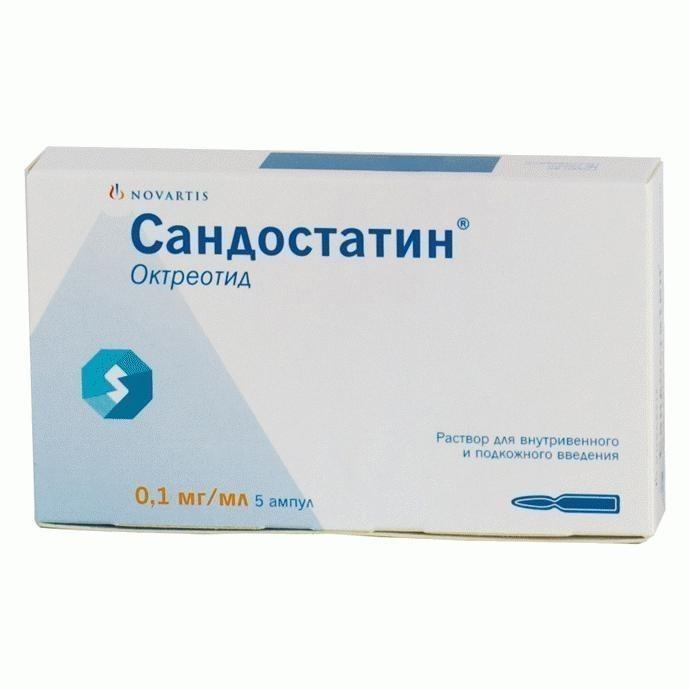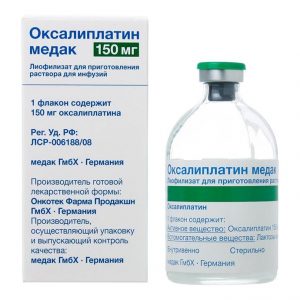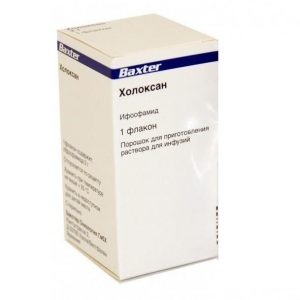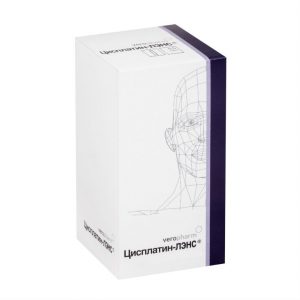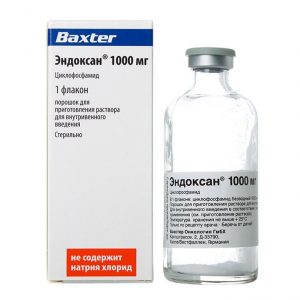Description
Latin name
Sandostatin
Release form
Solution for iv and sc administration.
Packing
In an ampoule of 1 ml of solution. In a cardboard package 5 ampoules.
Pharmacological action
Pharmacodynamics
Sandostatin is a synthetic octapeptide that is a derivative of the natural hormone somatostatin and has similar pharmacological effects, but a significantly longer duration of action. Sandostatin inhibits the secretion of growth hormone (GH), as pathologically increased, and caused by arginine, exercise and insulin hypoglycemia. The drug also inhibits the secretion of insulin, glucagon, gastrin, serotonin, both pathologically increased and caused by food intake, also inhibits the secretion of insulin and glucagon, stimulated by arginine. Sandostatin inhibits thyrotropin secretion caused by thyroliberin.
Unlike somatostatin, octreotide suppresses the secretion of GH to a greater extent than the secretion of insulin, and its administration is not accompanied by subsequent hypersecretion of hormones (for example, GH in patients with acromegaly).
In patients with acromegaly, Sandostatin reduces the concentration of GR and insulin-like growth factor (IGF-1) in blood plasma. A decrease in the concentration of GR by 50% or more is observed in 90% of patients, while the concentration of GR less than 5 ng / ml is achieved in about half of the patients. In most patients with acromegaly, Sandostatin reduces the severity of headache, soft tissue swelling, hyperhidrosis, joint pain and paresthesia. In patients with large pituitary adenomas, treatment with Sandostatin may lead to some reduction in tumor size.
In case of secreting endocrine tumors of the gastrointestinal tract and pancreas in cases of insufficient effectiveness of the therapy (surgery, hepatic artery embolism, chemotherapy, including streptozotocin and 5-fluorouracil), the appointment of Sandostatin can improve the course of the disease. So, with carcinoid tumors, the use of Sandostatin helps to reduce the severity of sensations of flushing of the face, diarrhea, which in many cases is accompanied by a decrease in the concentration of serotonin in plasma and excretion of 5-hydroxyindoleacetic acid in the urine. In tumors characterized by hyperproduction of a vasoactive intestinal peptide (VIPoma), the use of Sandostatin in most patients leads to a decrease in severe secretory diarrhea, and, accordingly, to an improvement in the patient’s quality of life. At the same time, there is a decrease in concomitant disturbances in the electrolyte balance, for example, hypokalemia, which allows you to cancel the enteral and parenteral administration of fluid and electrolytes. In some patients, the progression of the tumor slows down or stops, and its size decreases, as well as the size of the liver metastases. Clinical improvement is usually accompanied by a decrease in the concentration of vasoactive intestinal peptide (VIP) in plasma or its normalization.
With glucagonomas, the use of Sandostatin leads to a decrease in migratory erythema. Sandostatin does not significantly affect the severity of hyperglycemia in diabetes mellitus, while the need for insulin or oral hypoglycemic drugs usually remains unchanged. The drug causes a decrease in diarrhea, which is accompanied by an increase in body weight. Although the decrease in plasma glucagon concentration under the influence of Sandostatin is transient in nature, clinical improvement remains stable throughout the entire period of use of the drug.
In patients with gastrinomas / Zollinger-Ellison syndrome, when using Sandostatin as a monotherapy or in combination with proton pump inhibitors or histamine H2 receptor blockers, it is possible to reduce hypersecretion of hydrochloric acid in the stomach, decrease the concentration of gastrin in the blood plasma, and also reduce the severity of diarrhea and tides.
In patients with insulinomas, Sandostatin reduces the level of immunoreactive insulin in the blood (this effect can be short-term – about 2 hours). In patients with operable tumors, Sandostatin can restore and maintain normoglycemia in the preoperative period. In patients with inoperable benign and malignant tumors, glycemic control may improve without a simultaneous prolonged decrease in blood insulin levels.
In patients with rare tumors, hyperproducing growth hormone releasing factor (somatoliberinomas), Sandostatin reduces the severity of acromegaly symptoms. This is due to the suppression of secretion of the releasing factor of growth hormone and growth hormone itself. In the future, pituitary hypertrophy may decrease.
With refractory diarrhea in patients with AIDS, the use of Sandostatin leads to complete or partial normalization of stool in about 1/3 of patients suffering from diarrhea that is not controlled by adequate antimicrobial and / or antidiarrheal therapy.
In patients who are scheduled for pancreatic surgery, the use of Sandostatin during and after surgery reduces the incidence of typical postoperative complications (e.g., pancreatic fistula, abscesses, sepsis, postoperative acute pancreatitis).
When bleeding from varicose veins of the esophagus and stomach in patients with cirrhosis of the liver, the use of Sandostatin in combination with specific treatment (for example, sclerotherapy) leads to a more effective stop of bleeding and early rebleeding, reduce transfusion volume and improve 5-day survival. It is believed that the mechanism of action of Sandostatin is associated with a decrease in organ blood flow through the suppression of such vasoactive hormones as VIP and glucagon.
Pharmacokinetics
Absorption
After s / c administration, Sandostatin is rapidly and completely absorbed. Cmax of octreotide in plasma is reached within 30 minutes.
Distribution of
Plasma protein binding is 65%. The binding of Sandostatin to blood cells is extremely negligible. Vd is 0.27 L / kg.
Withdrawal of
T1 / 2 after sc injection of the drug is 100 min. After iv administration, the drug is excreted in 2 phases, with T1 / 2 10 and 90 minutes, respectively. Most of the drug is excreted in feces, about 32% – unchanged in urine. The total clearance is 160 ml / min.
Indications
Acromegaly: to control the main manifestations of the disease and reduce the levels of GR and IGF-1 in plasma in cases where there is no sufficient effect of surgical treatment or radiation therapy
treatment of patients with acromegaly who have refused surgery or have contraindications to it, and also for short-term treatment in the intervals between courses of radiation therapy until its effect is fully developed.
Secreting endocrine tumors of the gastrointestinal tract and pancreas – for symptom control: carcinoid tumors with carcinoid syndrome
vipoma
glucagonoma
gastrinoma / Zollinger-Ellison syndrome – usually in combination with inhibitors of the proton-influenza group 2 in the preoperative period, as well as for maintenance therapy)
somatoliberinomas (tumors characterized by overproduction of growth hormone releasing factor).
Sandostatin is not an antitumor drug and its use cannot lead to the cure of this category of patients.
Control of symptoms of refractory diarrhea in AIDS patients.
Prevention of complications after pancreatic surgery.
Stopping bleeding and preventing recurrence of bleeding from varicose veins of the esophagus and stomach in patients with cirrhosis. Sandostatin is used in combination with specific therapeutic measures, for example, endoscopic sclerotherapy.
Pregnancy and lactation
Experience with Sandostatin in pregnant women and nursing mothers is limited, therefore, this category of patients is prescribed only if the expected benefit to the mother outweighs the potential risk to the fetus or infant.
Composition
1 ml of solution contains:
Active substances: octreotide (in the form of a free peptide) 100 mcg.
Excipients: lactic acid, mannitol, sodium bicarbonate, carbon dioxide, water d / i.
Dosage and administration of
In case of acromegaly, the drug is initially administered at 50-100 mcg s / c at intervals of 8 or 12 hours. Further dose adjustment should be based on monthly determinations of the concentration of GR and IGF-1 in the blood (target concentration: GR < 2.5 ng / ml IGF-1 within normal values), analysis of clinical symptoms and tolerance to the drug. In most patients, the optimal daily dose is 300 mcg. Do not exceed the maximum dose of 1.5 mg / day. In patients receiving a stable dose of Sandostatin, the determination of the concentration of GR should be carried out every 6 months. If, after 3 months of treatment with Sandostatin, a sufficient decrease in growth hormone levels and an improvement in the clinical picture of the disease are not observed, therapy should be discontinued. With endocrine tumors of the gastrointestinal tract and pancreas, the drug is administered subcutaneously in an initial dose of 50 mcg 1-2 times / day. In the future, depending on the achieved clinical effect, the effect on the levels of hormones produced by the tumor (in the case of carcinoid tumors, the effect on the excretion of 5-hydroxyindoleacetic acid in the urine) and tolerance, the dose of the drug can be gradually increased to 100-200 μg 3 times / day. In exceptional cases, higher doses may be required. Maintenance doses of the drug should be selected individually. In carcinoid tumors, if Sandostatin therapy at the maximum tolerated dose for 1 week was not effective, treatment should not be continued. With refractory diarrhea in AIDS patients, the drug is administered subcutaneously in an initial dose of 100 mcg 3 times / day. If after 1 week of treatment the diarrhea does not subside, the dose of the drug should be increased individually, up to 250 mcg 3 times / day. Dose adjustment is carried out taking into account the dynamics of the stool and tolerance to the drug. If during the week of treatment with Sandostatin at a dose of 250 mcg 3 times / day, improvement does not occur, therapy should be discontinued. For the prevention of complications after pancreatic surgery, SC is administered at 100 mcg 3 times / day for 7 consecutive days starting from the day of surgery (at least 1 hour before laparotomy). When bleeding from varicose veins of the esophagus and stomach, the drug is administered at a dose of 25 mcg / h by continuous iv infusion for 5 days. Sandostatin can be diluted with isotonic sodium chloride solution. In patients with cirrhosis of the liver with bleeding from varicose veins of the esophagus, Sandostatin was well tolerated, applied for 5 days to 50 mcg / h in the form of a continuous iv infusion. Currently, there is no data that would indicate that elderly patients have reduced Sandostatin tolerance and require a change in dosing regimen. Experience with Sandostatin in children is very limited. In patients with impaired liver function, a maintenance dose adjustment is recommended because there is evidence of an increase in T1 / 2 octreotide in patients with cirrhosis. In patients with impaired renal function, Sandostatin dosage adjustment is not required. Terms of use of the drug The drug in its original packaging, intended for use in the near future, can be stored at a temperature not exceeding 30 ° C for no more than 2 weeks. SC administration Patients who self-administer subcutaneous Sandostatin should receive detailed instructions from a doctor or nurse. Before administration, the solution should have room temperature, which helps to reduce discomfort at the injection site. You should not enter the drug in the same place with short intervals. Ampoules should be opened immediately before the introduction of the drug, an unused amount of solution is discarded. I / O administration Before use, the solution for iv administration should be carefully examined for discoloration of the solution and the presence of foreign particles. Sandostatin (octreotide acetate) for 24 hours maintains physical and chemical stability in sterile physiological saline or 5% glucose in water. However, since Sandostatin may affect glucose metabolism, it is preferable to use saline. The prepared solution maintains physical and chemical stability at a temperature below 25 ° C for at least 24 hours To avoid microbial contamination, diluted solutions should be used immediately after preparation. If the solution will not be used immediately, it should be stored at a temperature of 2 ° to 8 ° C until its use. Before use, the solution should be kept at room temperature. The total time between dilution, storage in the refrigerator and the end of the solution should not exceed 24 hours. If it is necessary to iv the Sandostatin, the contents of one ampoule containing 500 μg of the active substance should be diluted in 60 ml of physiological saline, and the prepared solution should be inject intravenously. The infusion is repeated with the necessary frequency in accordance with the recommended duration of treatment. Sandostatin can also be administered at lower concentrations. Side effects The main adverse events observed with Sandostatin were reactions at the injection site and reactions from the gastrointestinal tract. The most commonly used Sandostatin was diarrhea, abdominal pain, flatulence, pain or irritation at the injection site. Transient gastrointestinal disorders were observed in 10% of patients and usually disappeared with continued treatment with the drug. Determination of the frequency of adverse reactions: very often ( 1/10) often ( 1/100, 1/10) sometimes ( 1/1000, 1/100) rarely ( 1/10 000, 1/1000) is very rare ( 1/10 000), including single messages. From the digestive system: often – diarrhea, spastic abdominal pain, constipation, flatulence sometimes – cholecystitis rarely – steatorrhea, nausea, vomiting, bloating, gallstones formation very rarely – acute pancreatitis, anorexia, loose stools, acute hepatitis without cholestasis, hyperbilirubinemia, increased levels of alkaline phosphatase, GGT and hepatic transaminases. Dermatological reactions: sometimes – temporary hair loss. From the cardiovascular system: sometimes – bradycardia, tachycardia. Allergic reactions: rarely – hypersensitivity, rash very rarely – anaphylaxis. From the endocrine system: very rarely – hypoglycemia, hyperglycemia. From the respiratory system: very rarely – shortness of breath. Local reactions: pain, sensation of itching or burning, redness and swelling at the injection site (usually go away within 15 minutes). The severity of local reactions can be reduced if you use a solution of room temperature, or if you enter a smaller volume of a more concentrated solution. Other Although the excretion of fat with feces may increase, to date there is no evidence that prolonged treatment with octreotide can lead to nutritional deficiency due to malabsorption (malabsorption). The frequency of side effects from the gastrointestinal tract can be reduced by increasing the time intervals between meals and the introduction of Sandostatin. Very rare cases of acute pancreatitis have been reported that developed in the first hours or days of SC use of Sandostatin and disappeared after discontinuation of the drug. In addition, with prolonged use of Sandostatin sc, cases of pancreatitis associated with cholelithiasis were noted. When using Sandostatin, thyroid dysfunction (both decreased and increased activity) and dyspeptic symptoms were rarely observed. Cases of arrhythmias have been reported in patients receiving octreotide acetate treatment. According to an ECG study during the use of the drug, the following were observed: prolongation of the OT interval, deviation of the electrical axis of the heart, early repolarization, low-voltage type of ECG, displacement of the transition zone, early P wave and nonspecific changes in the ST segment and T wave. Since many patients with acromegaly and carcinoid tumors show heart disease, a causal relationship between the use of Sandostatin and the development of these adverse events has not been established. Drug Interaction Sandostatin decreases cyclosporine absorption and slows cimetidine absorption. The combined use of octreotide and bromocriptine increases the bioavailability of bromocriptine. There is evidence that somatostatin analogues may reduce the metabolic clearance of substances metabolised by cytochrome P450 isoenzymes, which may be due to GH suppression. As it cannot be ruled out that octreotide may also have this effect, caution should be exercised when prescribing CYP3A4 isoenzyme-metabolizing drugs with a narrow range of therapeutic concentrations (eg, quinidine, terfenadine). Overdose Doses of octreotide up to 2000 mcg as a p / k injection 3 times / day for several months were well tolerated. Symptoms: the maximum single dose in / in bolus administration to an adult patient was 1 mg, with a decrease in heart rate, blood tides to the face, spastic abdominal pain, diarrhea, feeling of emptiness in the stomach and nausea all resolved within 24 h from the moment the preparation was introduced. One patient was mistakenly administered an overdose of Sandostatin (250 μg / h for 48 h instead of 25 μg / h) by prolonged infusion, which was not accompanied by side effects. No acute life-threatening reactions were noted with acute overdose. Treatment: carrying out symptomatic therapy. Storage conditions Keep out of the reach of children, in the original packaging, in the refrigerator, at a temperature of 2 ° to 8 ° C, do not freeze, protect from light. Expiration 3 years. Active substance Octreotide Dosage form dosage form injection srfflfff15 and dpfff injection18 Novartis Farma Stein AG, Switzerland
